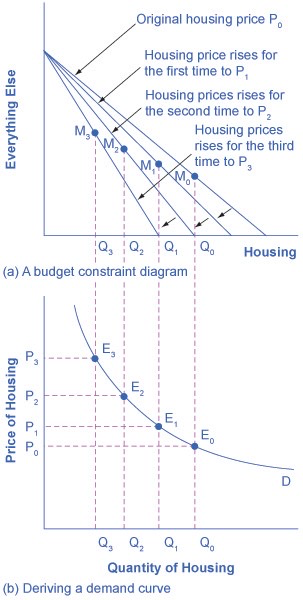How do Budget Constraints Create Demand Curves?
The budget constraint is a trade off based upon a finite budget or available resources. When the price of a good changes, the budget constraint changes.
Individuals seeking maximum utility from their purchases will purchase the quantity of goods where the utility received from the next unit of each good is equal.
The demand curve shows the shift in demand for goods at a given price. As the quantity demanded changes with a change in price, the curve shifts.
Below is an illustration.

